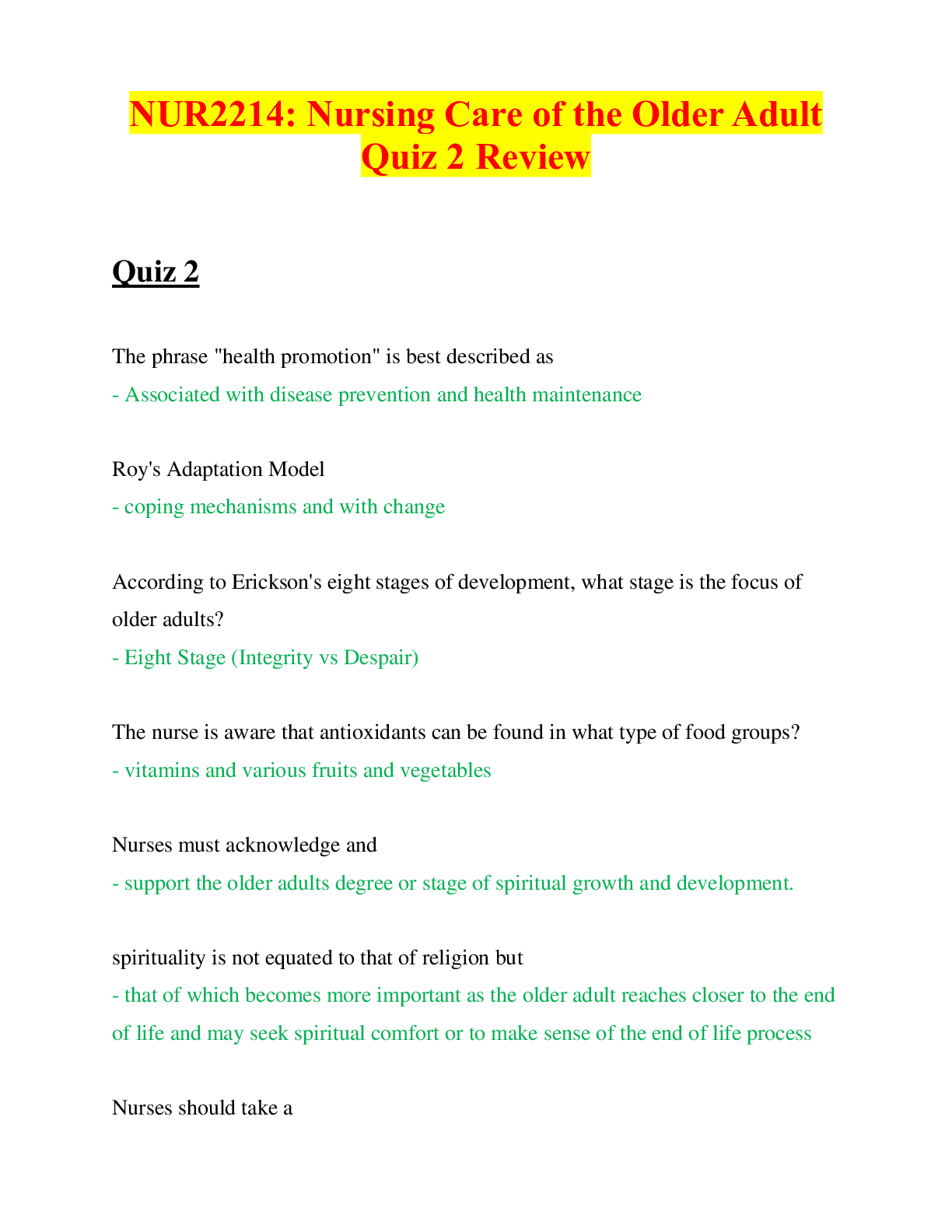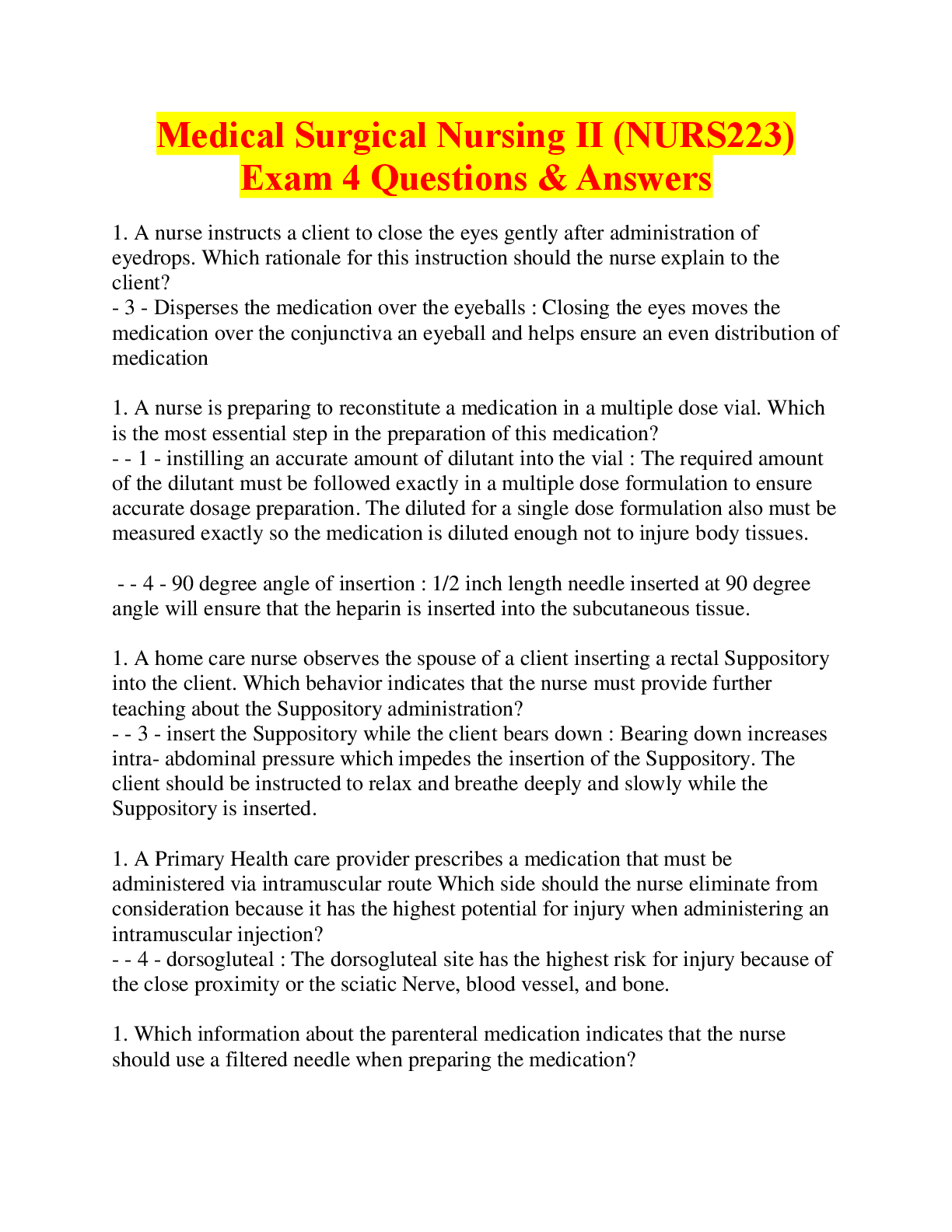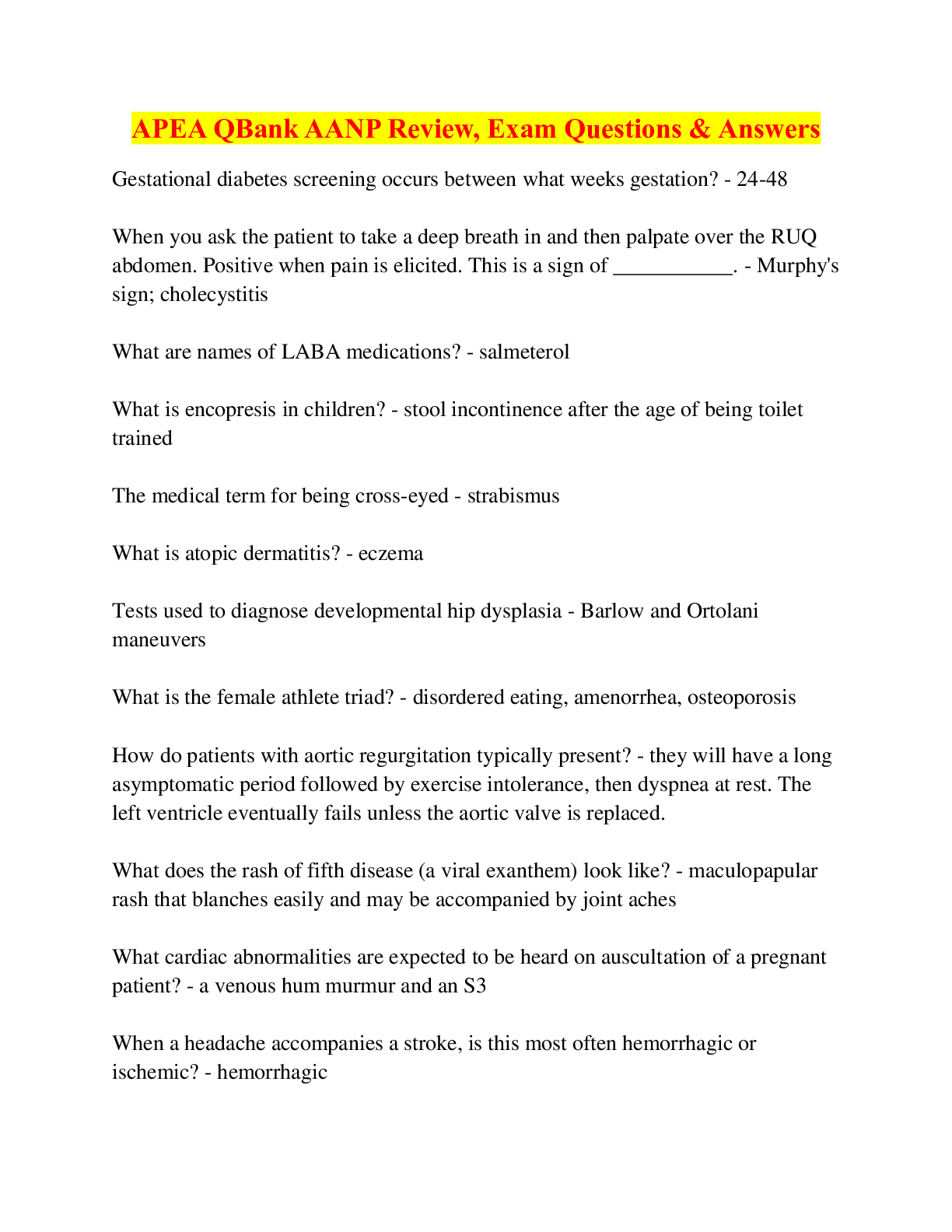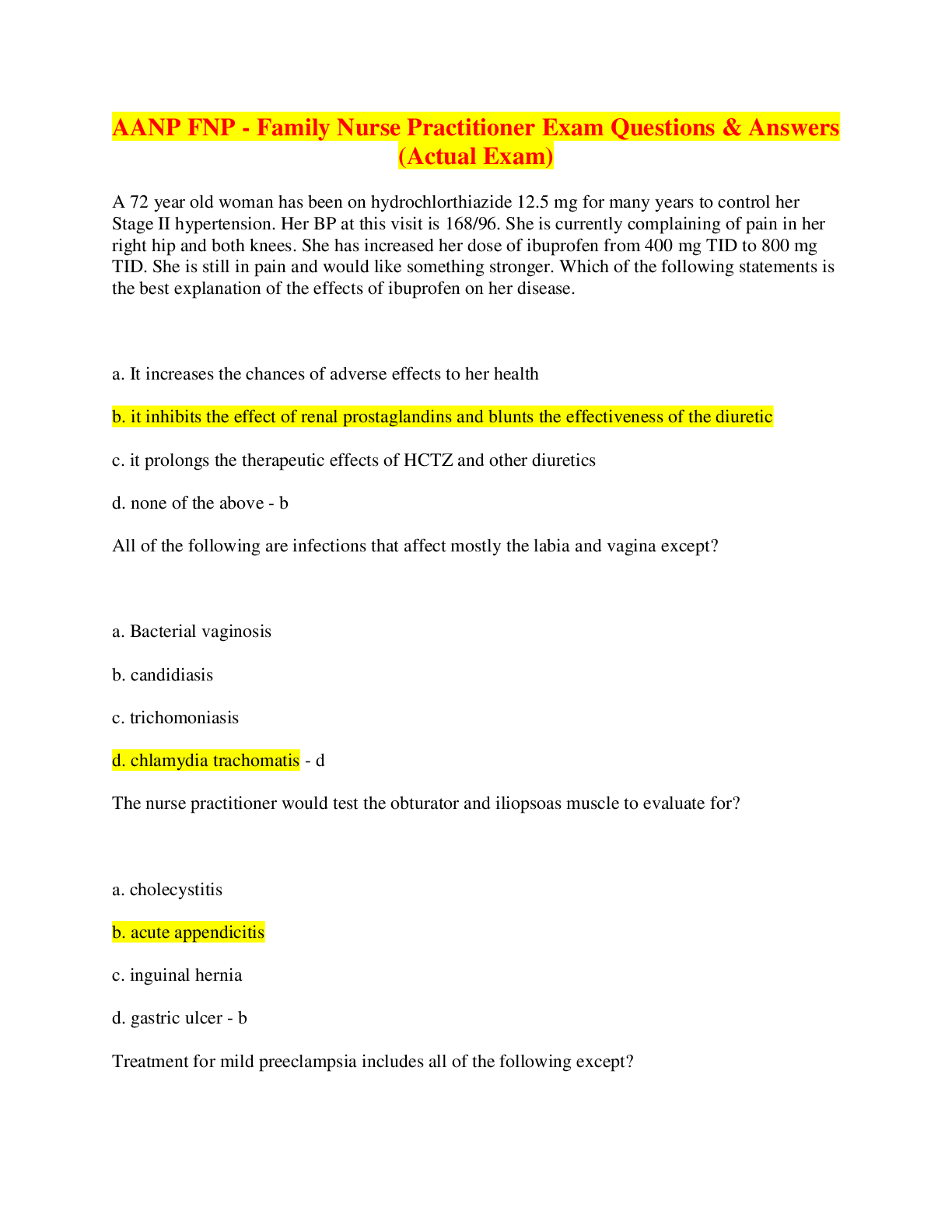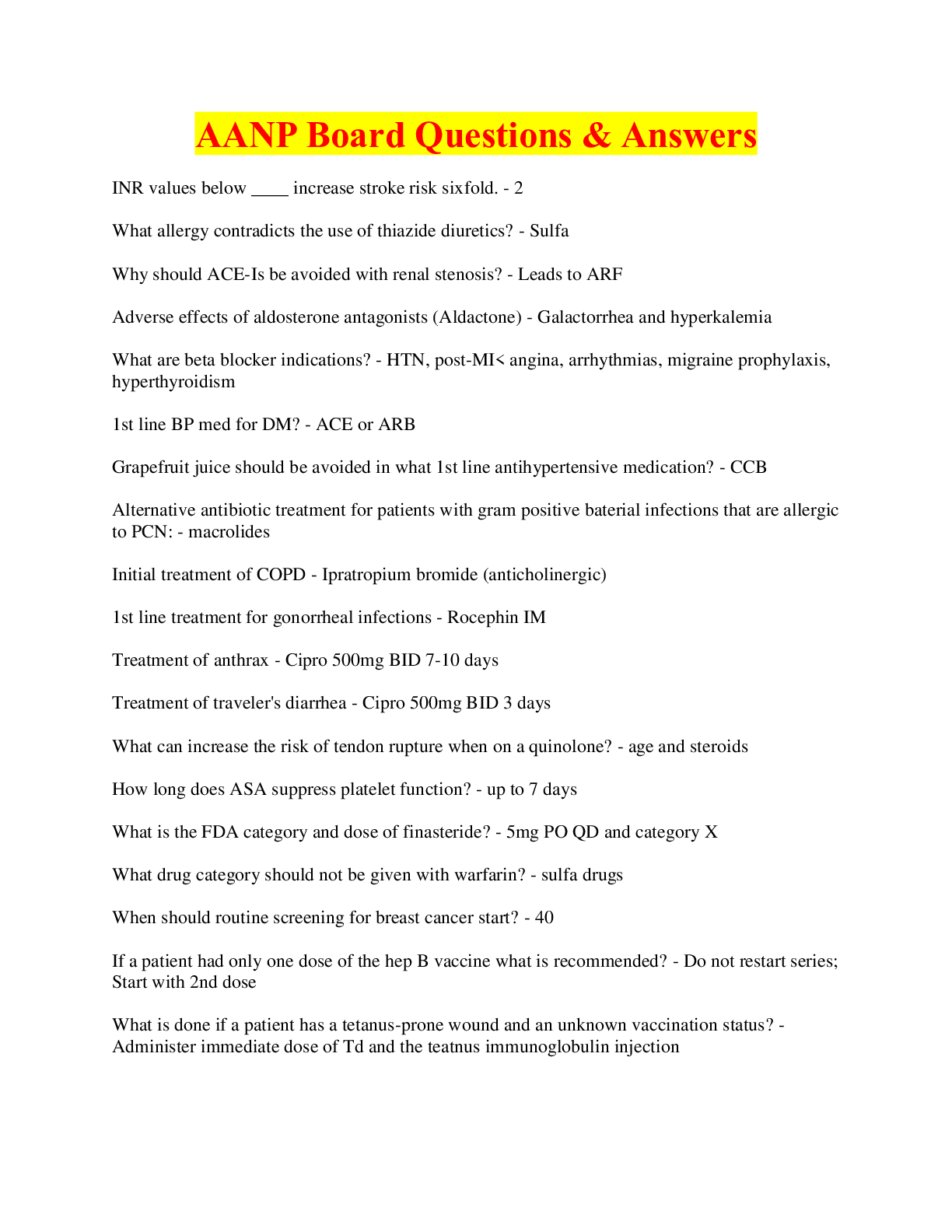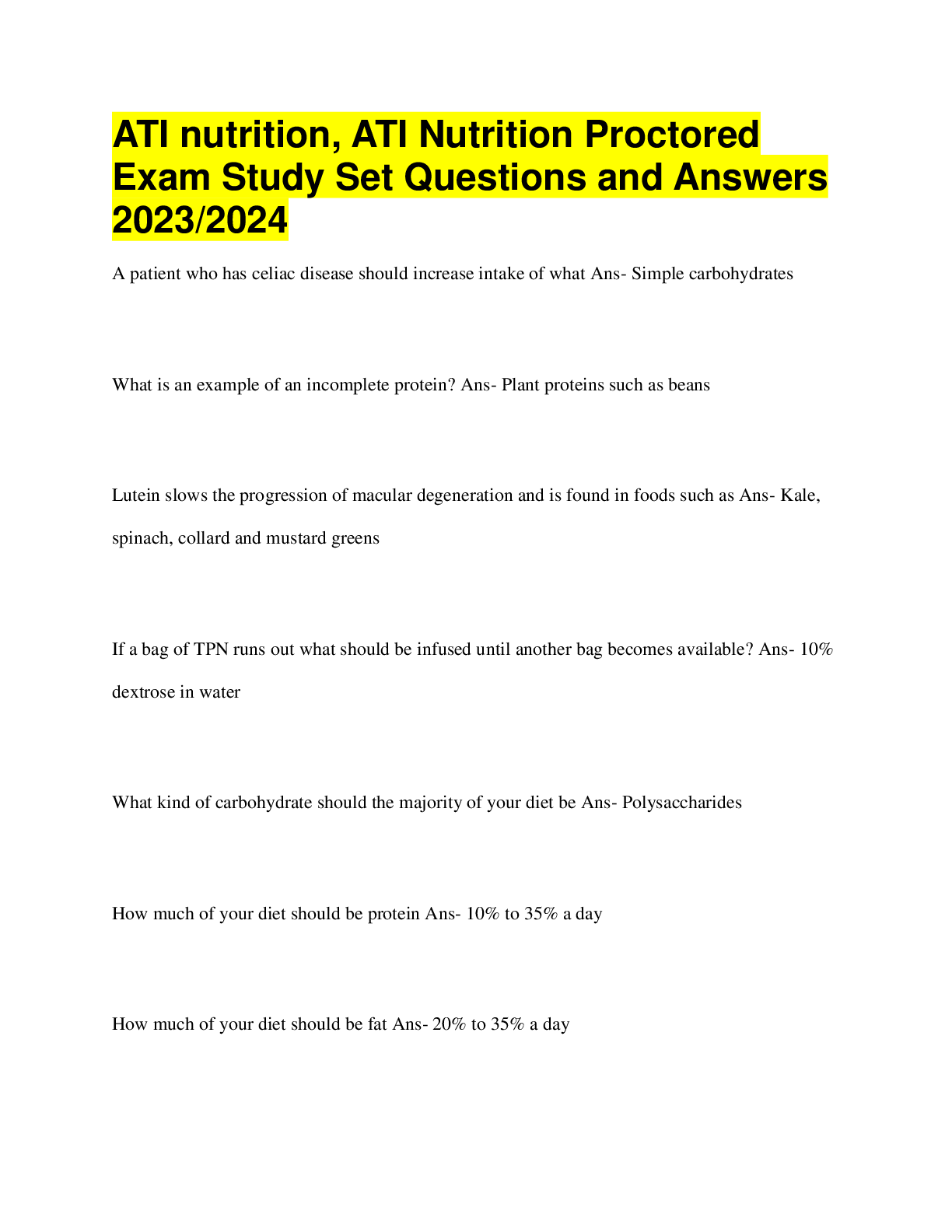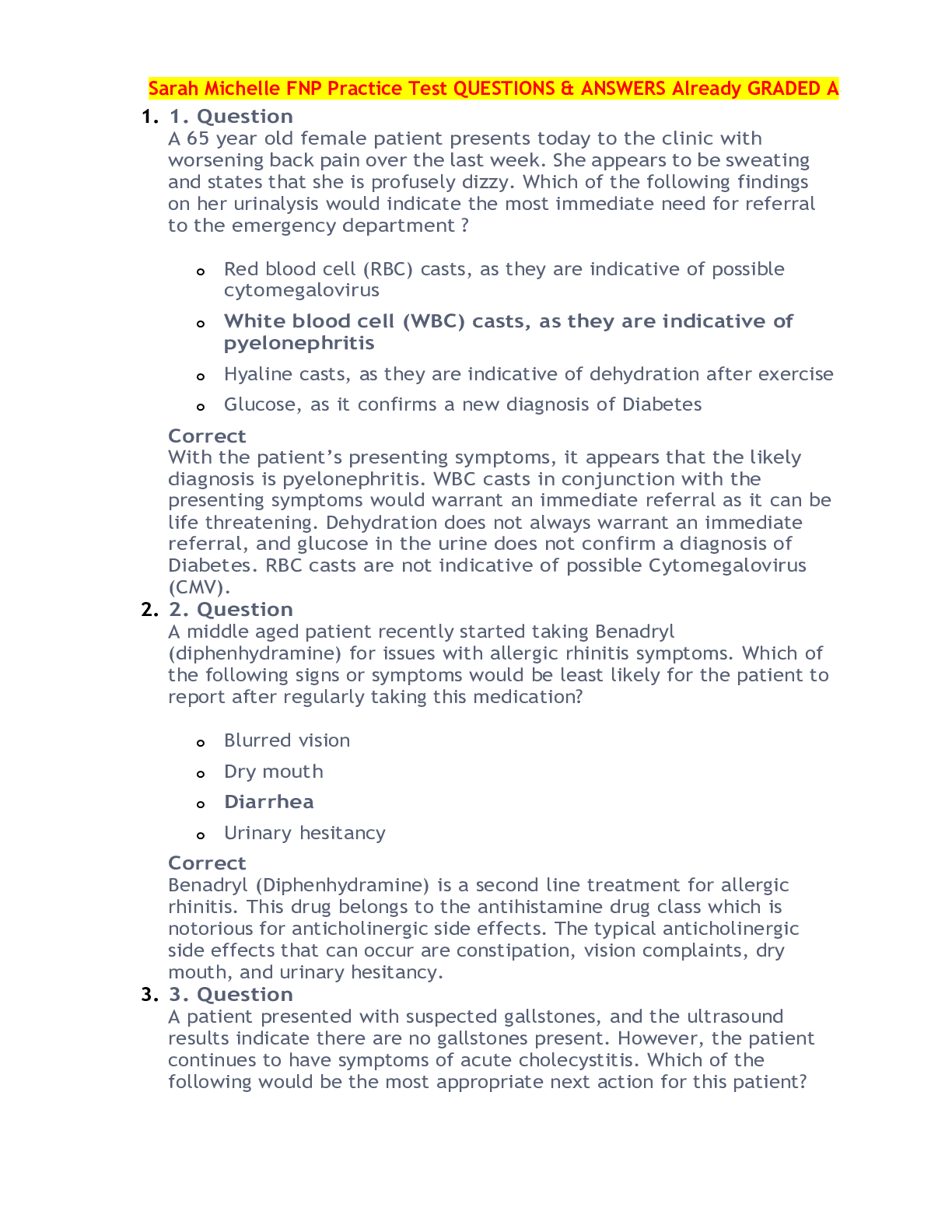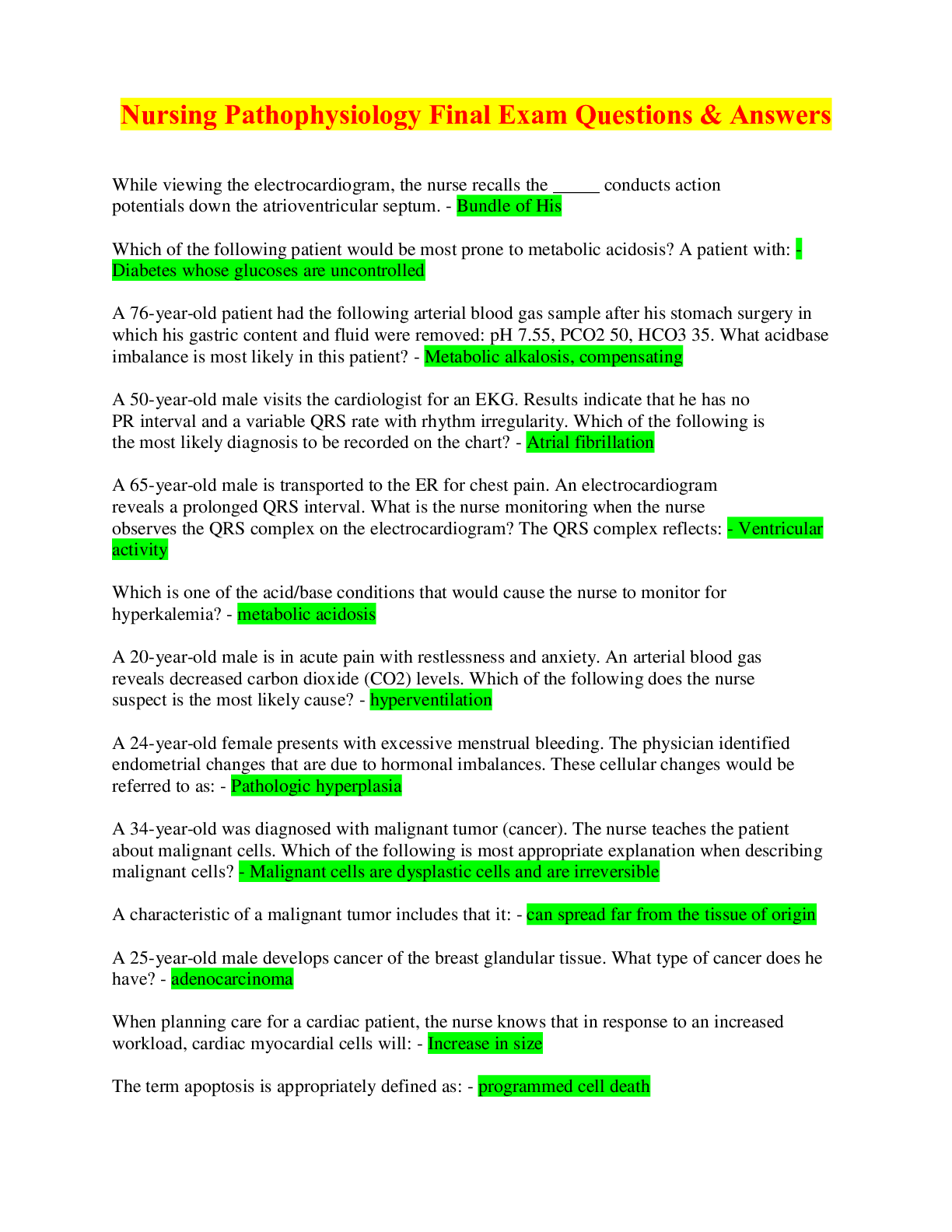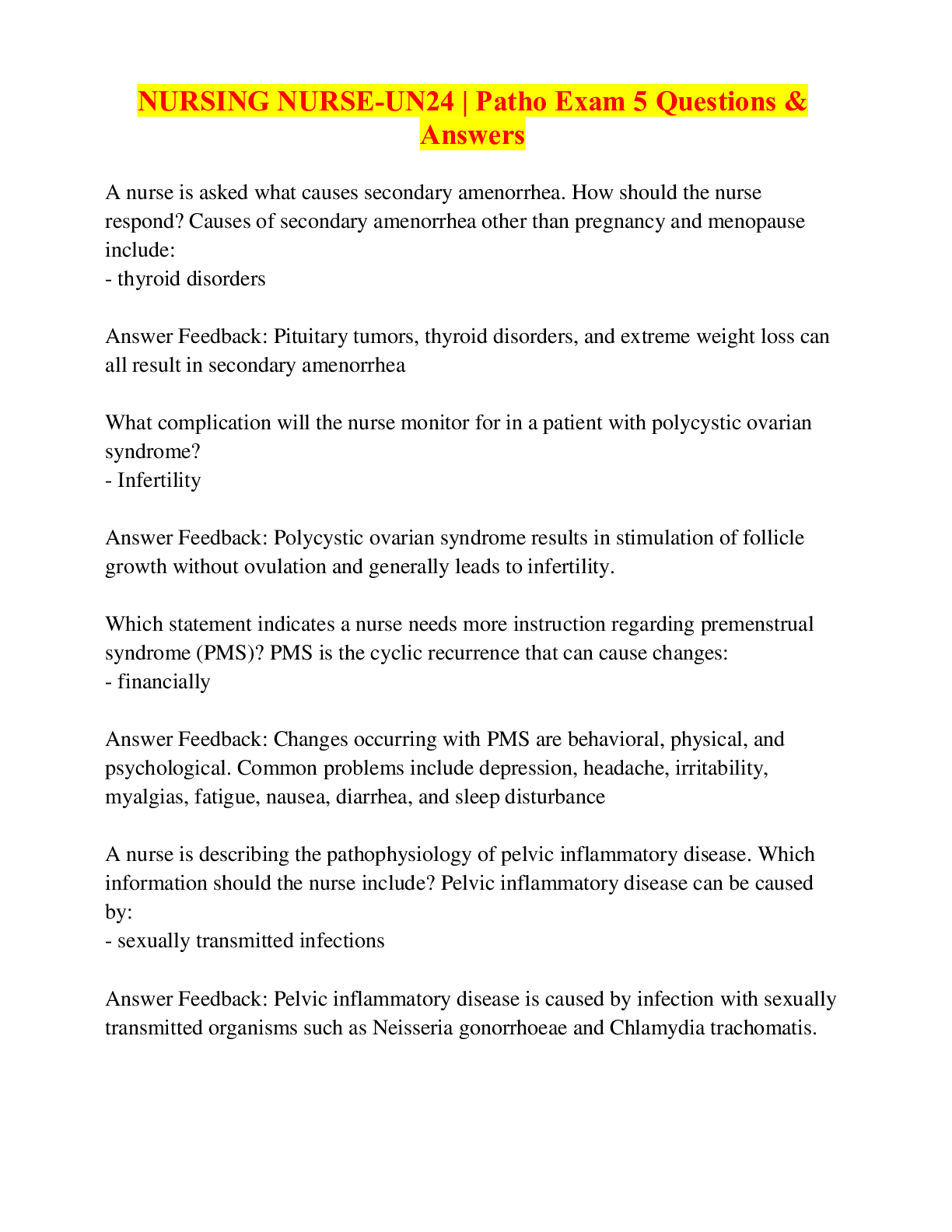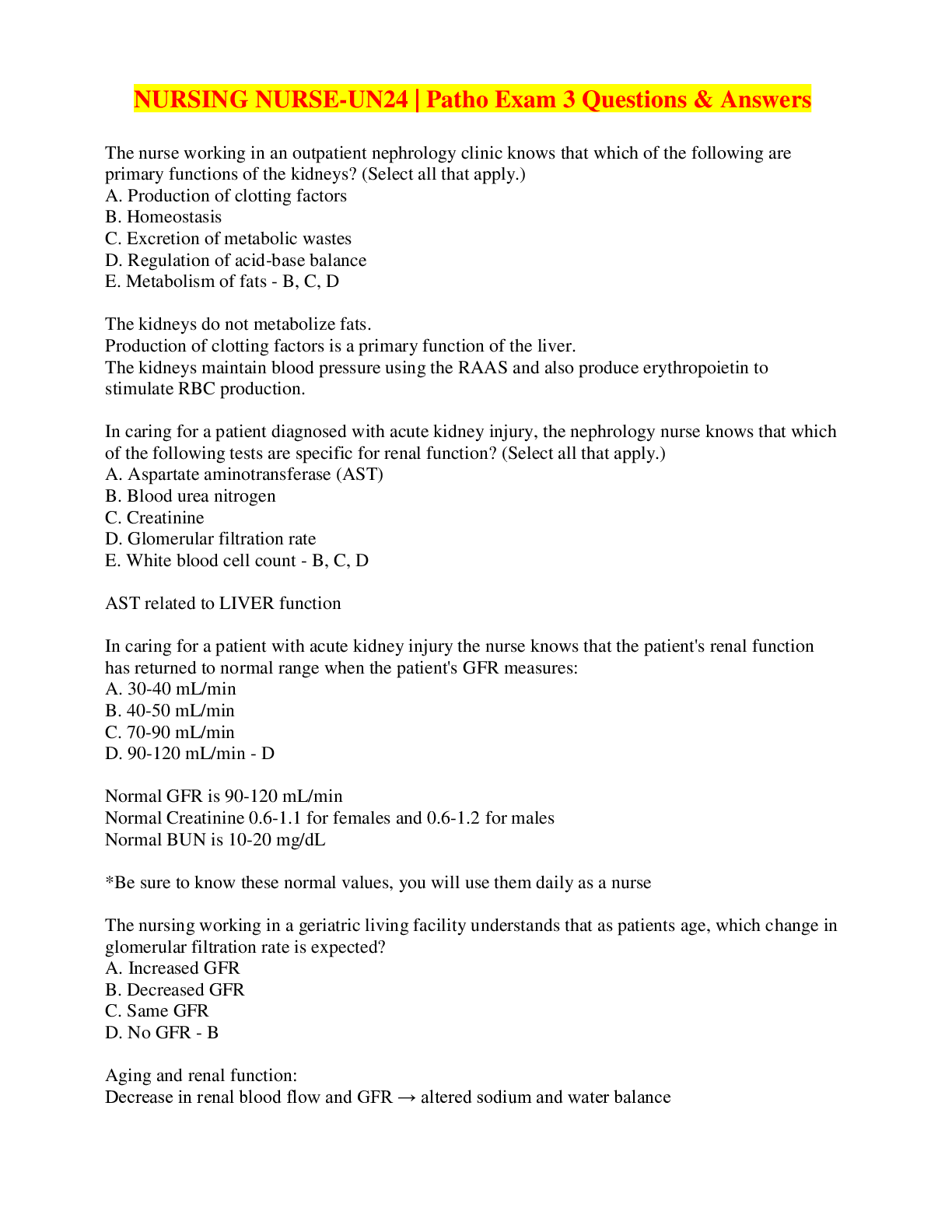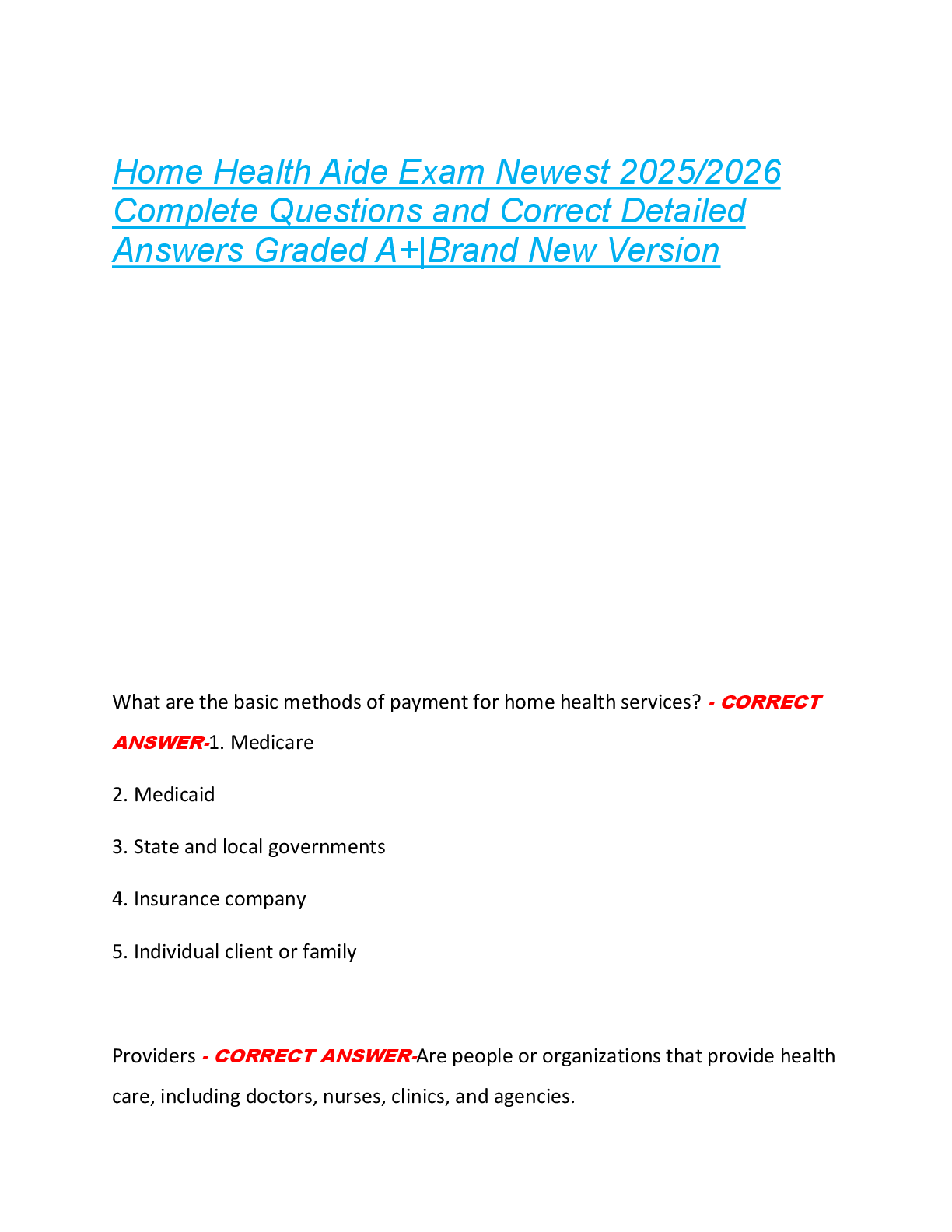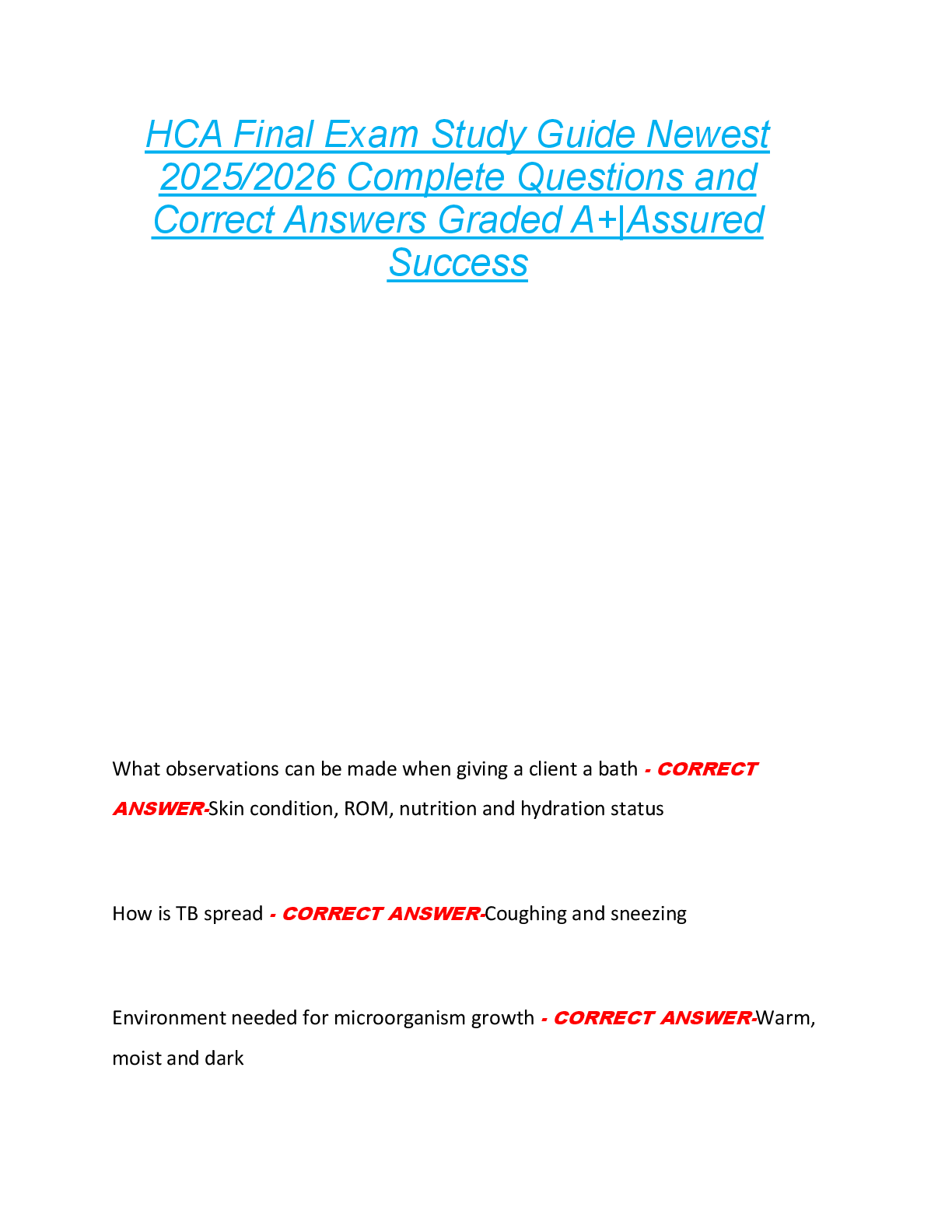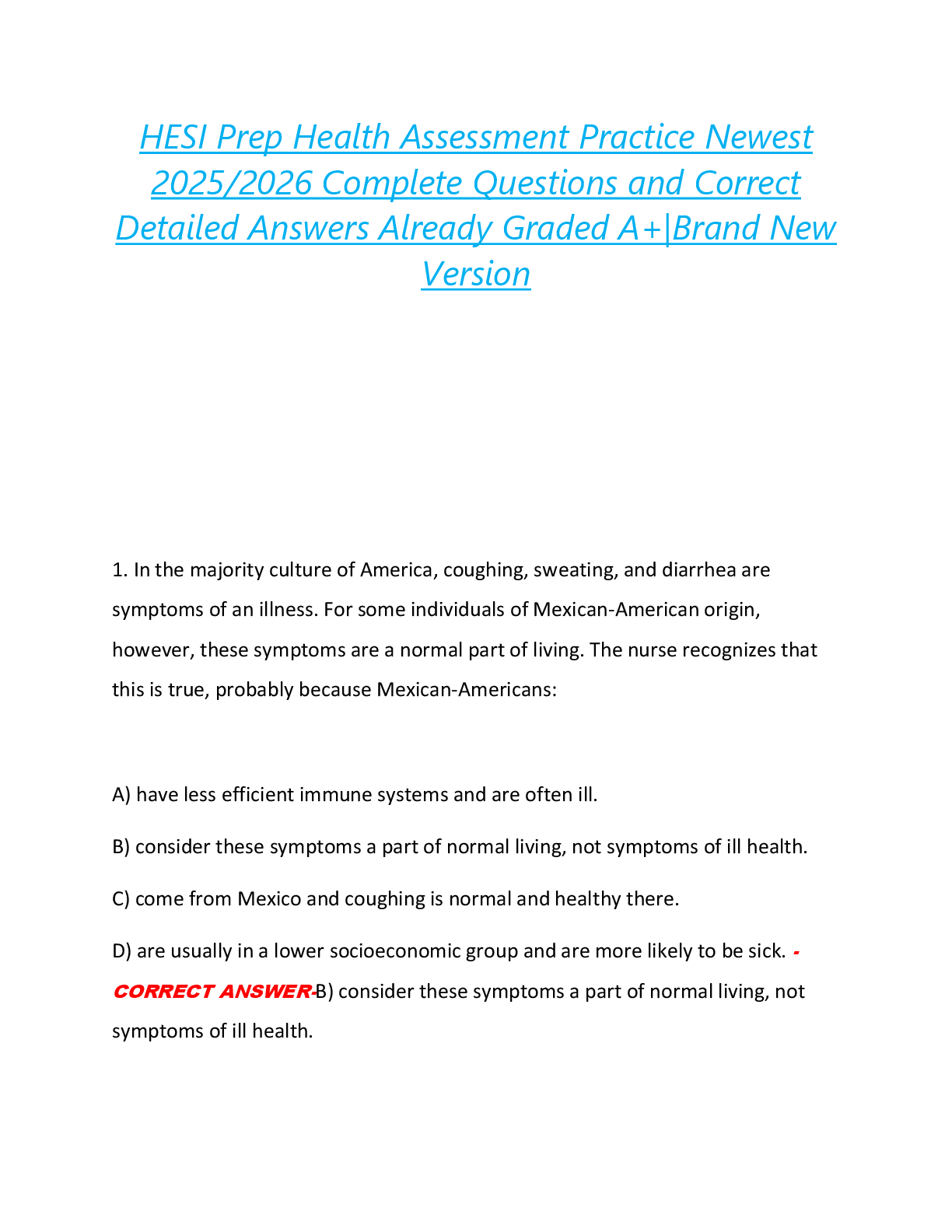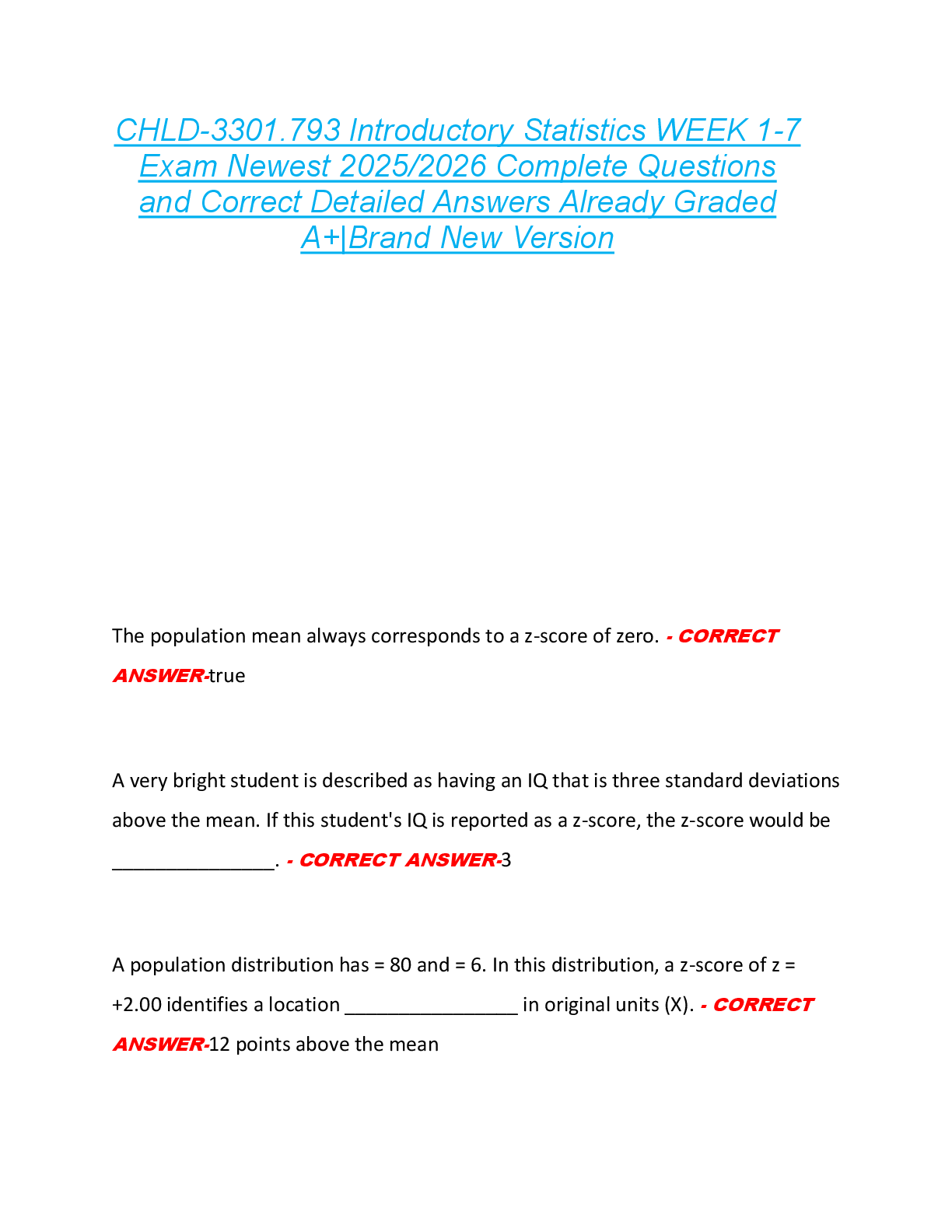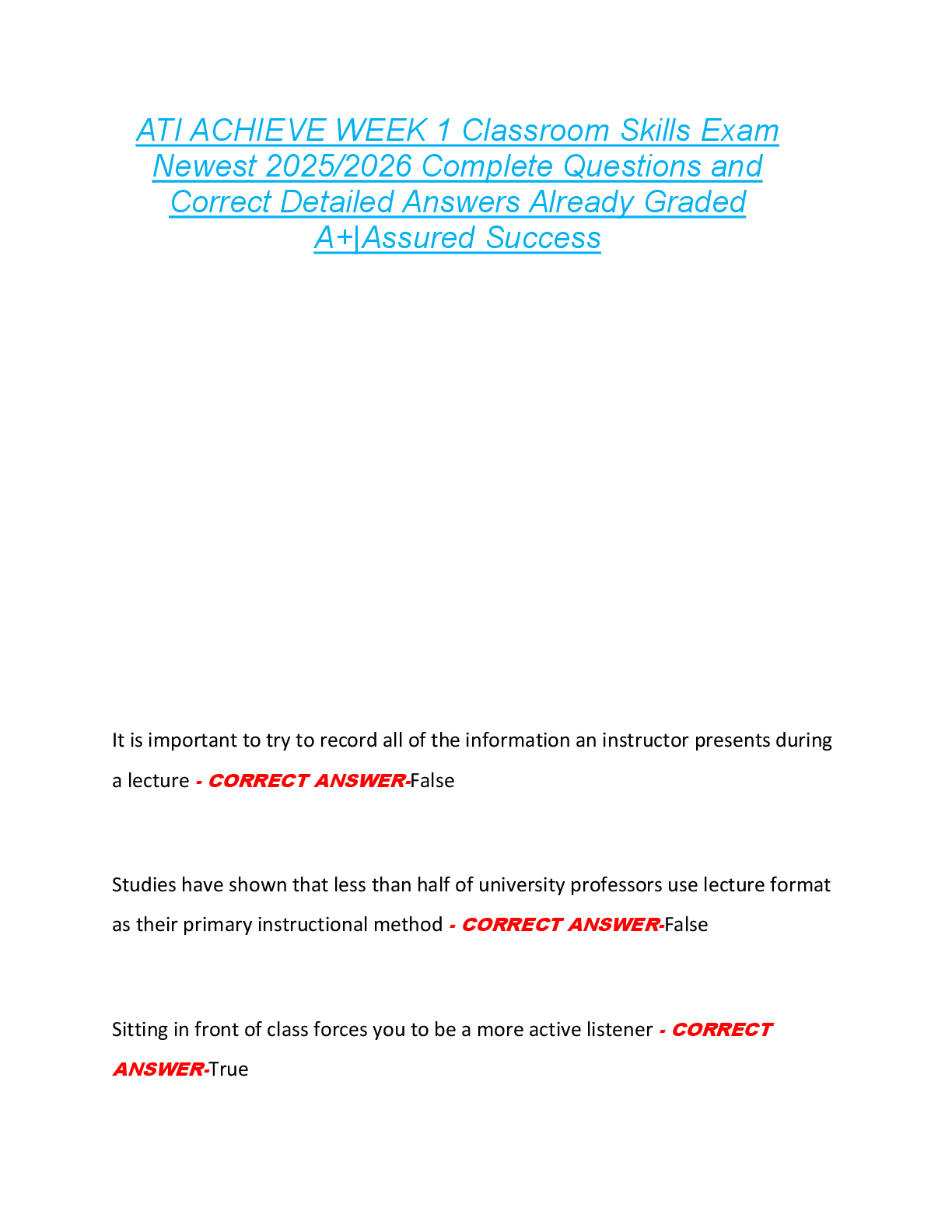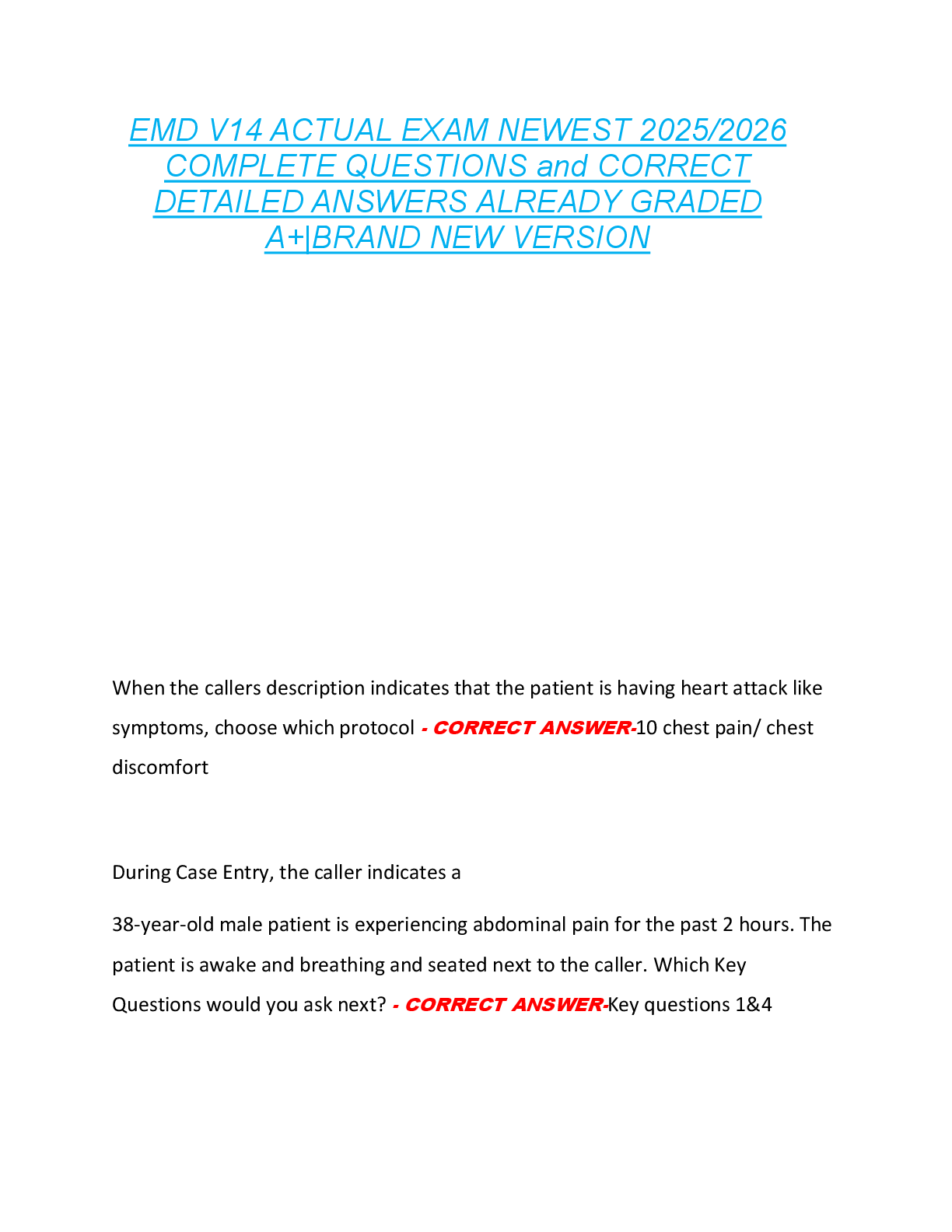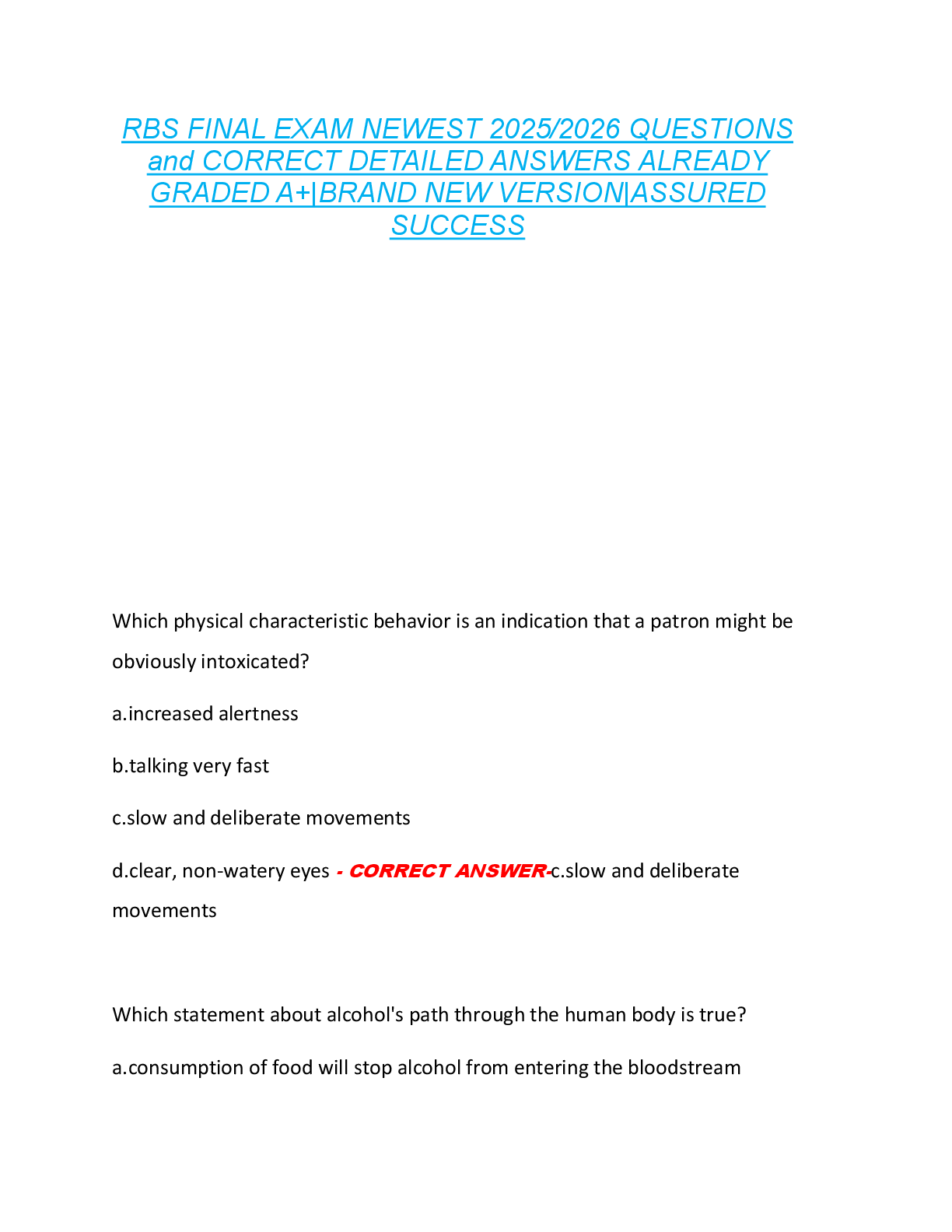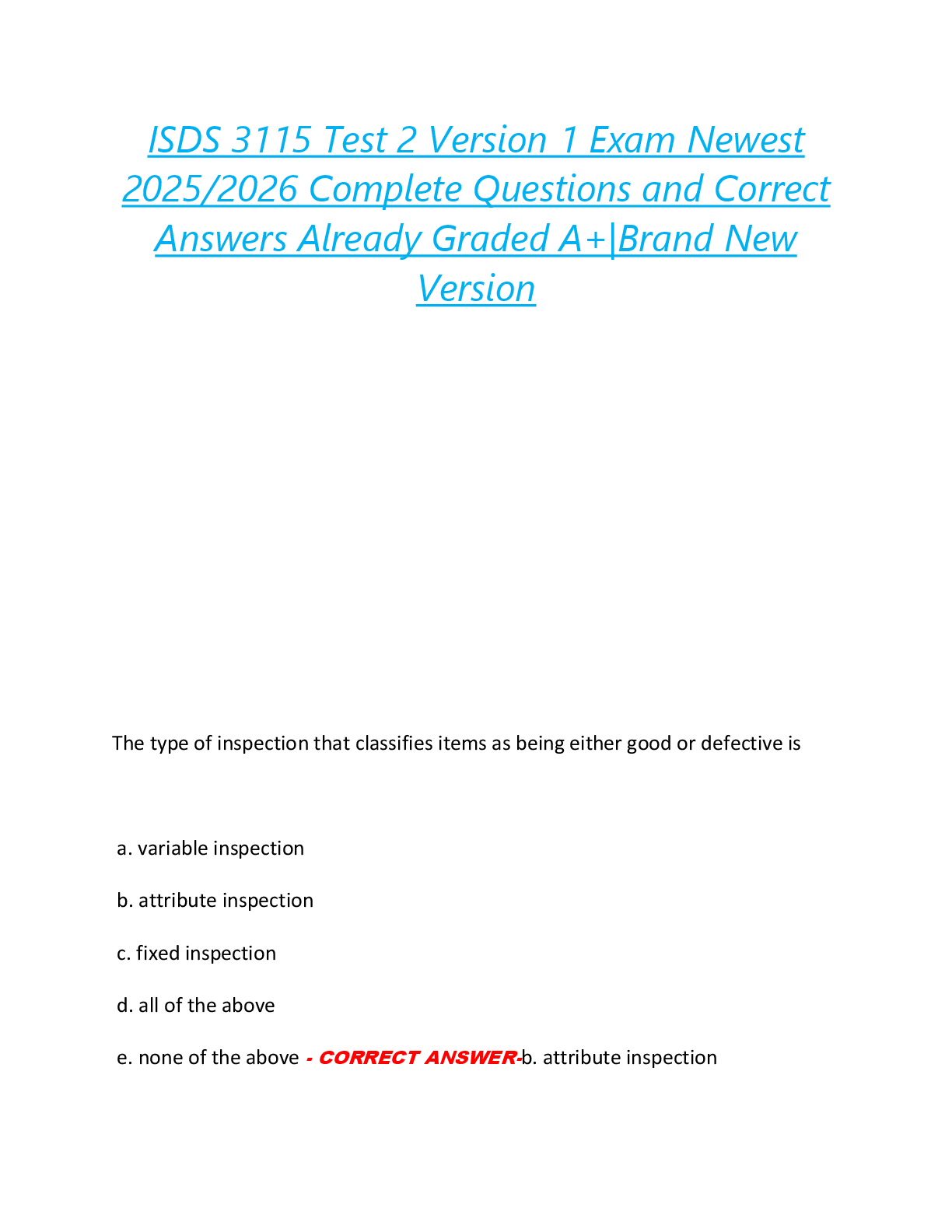PCCN Actual Exam Questions with Correct Answers, Graded A+, Latest Version
Document Content and Description Below
PCCN Actual Exam Questions with Correct Answers, Graded A+, Latest Version-1. A 49-year-old male was recently admitted with an inferior wall MI resulting from 100% occlusion of the right coronary art ... ery (RCA). The 12-Lead ECG reveals ST elevation in leads II, Ill, and avF. You would expect to see reciprocal changes in which leads? A. I, aVR B. V, V2 C. V, VA D I, aVL - 1. D. I, aVI. The RCA perfuses the inferior wall and the mirror image or reciprocal change will be seen in the high latera wall, which is reflected in leads I, and aVL, on the 12-Lead ECG. Leads V1 and V2 correlate with the septal area, leads V3 and V4 correlate With the anterior area of the heart. The aVR lead does not provide much diagnostic value as all energy is depolarizing away from this lead. You are summoned to the room of a 30-year-old female who is experiencing sustained tonic-clonic convulsions while sitting in a chair. A family member states: "She was just talking to us and suddenly she let out a shriek and started flopping like a fish out of water." What is your initial priority of care? A. Call for help and safely guide the patient to the floor B. Call for help and administer a prescribed antiepileptic C. Call for help and administer a prescribed benzodiazepine D. Call for help and monitor the course of the seizure - A. Call for help and safely guide the patient to the floor Patient Safety is priority A 46-year-old patient presents with pneumonia and sepsis. He was treated with 4 days of antibiotics and IV fluids. He is increasingly short of breath and is now on 100% FiO, via non-re-breather mask. You obtain an ABG with the following results: pH 7.20 / PaCO, 68/ PaO, 102/ HCO, 28. A chest x-ray reveals bilateral pulmonary infiltrates. The patient is likely developing: A. Worsening pneumonia B. Acute Respiratory Distress Syndrome C. Pulmonary embolus D. Atelectasis - B. Acute Respiratory Distress Syndrome A 56-year-old male is admitted to the PCU with a hypertensive crisis. His blood pressure is now 205/125 mm Hg and he is complaining of a headache with nausea. He reports he ran out of blood pressure medication three days ago, but also appears to be confused to the date and situation. What is the most appropriate treatment approach? A. Rapidly lower the systolic pressure to 100 mm Hg with IV antihypertensive medication, then gradually reduce the diastolic pressure to 85 mm Hg with oral antihypertensive medications B. Slowly lower the systolic pressure to 120 mm Hg with IV antihypertensive medications, then switch to oral antihypertensive medications for maintenance C. Rapidly lower the diastolic pressure to 100 mm Hg with IV antihypertensive medications, then continue to gradually reduce the diastolic pressure to 85 mm Hg with oral antihypertensive medications D. Slowly lower the diastolic pressure to 85 mm - C. Rapidly lower the diastolic pressure to 100 mm Hg with IV antihypertensive medications, then continue to gradually reduce the diastolic pressure to 85 mm Hg with oral antihypertensive medication 5. Which of the following labs must be closely monitored when administering Lisinopril to a patient with systolic heart failure? A. Sodium B. Phosphate C. Magnesium D Potassium - D. Potassium Patients taking angiotensin converting enzyme inhibitors may experience hyperkalemia. ACE inhibitors block angiotensin II, which may lead to decreased aldosterone. Aldosterone is responsible forexcreting potassium from the kidneys. Therefore, ACE inhibitors can cause potassium retension and potassium levels should be monitored closely. In addition, renal labs such as BUN and creatinine should be monitored. If the patient develops more than a 20% increase in the creatinine, the medication should be discontinued. A 57-year-old man was admitted with an acute myocardial infarction and is rapidly deteriorating. He has a BP of 86/42 (57), heart rate of 110, weak, thready pulses, and mottled skin-especially at the knees. He has had minimal urine output the past 8 hours. A Rapid Response is activated. Which of the following medications would be the best option to increase the patient's cardiac output? A Dobutamine B Norepinephrine C Amiodarone D Phenylephrine - A Dobutamine. Dobutamine is a positive inotropic medication used to improve myocardial dysfunction on patients with a low cardiac index and elevated afterload. It will improve contractility and reduce afterload. Milrinone, which is a phosphodiesterase inhibitor could also be used as an alternative to dobutamine, in the setting of decompensated heart failure. It is used cautiously in patients experiencing cardiogiogenic shock as one of the main side effects of Milrinone is hypotension. The half life of Milrinone is about 6 hours. Norepinephrine and Phenylephrine cause vasoconstriction, which would increase the SVR and may compromise cardiac output. You are caring for a patient post gastric bypass. Which of the following parameters should you closely monitor after surgery? A* HR, RR, temperature, WBC & MAP B* Protein levels and vitamin B12 C* Albumin and pre-albumin levels D* Signs of dumping syndrome - A* HR, RR, temperature, WBC & MAP You are caring for a patient admitted after a ground level fall. The patient has decreased level of consciousness. On admission the patient is ordered to be a full code. The family arrives with advanced directives stating the patient wishes not to have CPR performed or life sustaining treatment continued. The nurse approaches the provider about this discrepancy and the provider states "I am aware of the advanced directive, but the daughter wants everything done." What is the appropriate next step by the nurse? A* Ask the daughter why she wants everything done B* Collaborate with the provider and social worker to schedule a family meeting C* Tell the doctor we have to follow the patient's wishes * Discuss the situation with the nurse manager - B* Collaborate with the provider and social worker to schedule a family meeting Which is the best intervention to promote safety of the patient receiving hemodialysis? A* Direct visualization of the connection between the machine and the access device B* Strict intake and output monitoring C* Strict bedrest D* Electrolyte assessment q 4 hours - A* Direct visualization of the connection between the machine and the access device The nurse must be able to visualize the junction of the central venous access and the dialysis unit at all times. Disconnection can result in exsanguination within minutes. Four hours after starting an insulin infusion in a patient admitted with diabetic ketoacidosis, the patient's blood glucose is 235 mg/dL. Which of the following fluids should be administered at this point? A Hypertonic solution to hydrate the cell B D5.45 or D NS with a glucose source C Isotonic saline bolus to maintain extracellular hydration D Hypotonic saline to provide cellular hydration - B D5.45 or D NS with a glucose source Dextrose should be included in IV fluids since the glucose has dropped below 250. This is done to prevent hypoglycycemia. [Show More]
Last updated: 11 months ago
Preview 5 out of 33 pages

Loading document previews ...
Buy this document to get the full access instantly
Instant Download Access after purchase
Buy NowInstant download
We Accept:

Also available in bundle (1)
Click Below to Access Bundle(s)
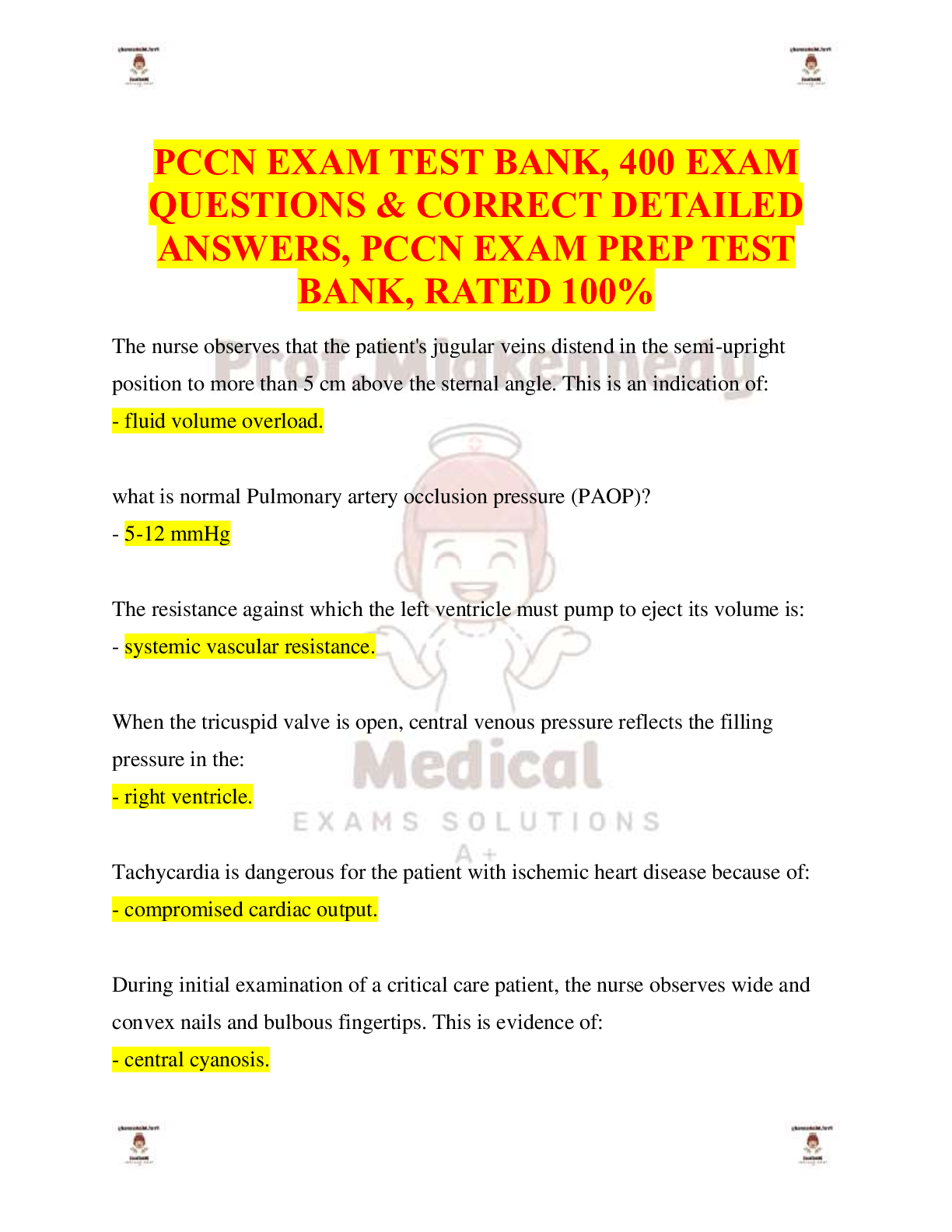
BUNDLE: Progressive Care Certified Nurse (PCCN) Exam TESTBANK, PCCN Actual Exam, Exam Prep, PCCN Exam 1, PCCN Final Exam, Final Exam Review, PCCN Practice Exam Notes 2025 Answered & Adult CCRN/PCCN Certification Practice Test Exam Questions & Answers, ALL RATED 100%
BUNDLE: Progressive Care Certified Nurse (PCCN) Exam TESTBANK, PCCN Actual Exam, Exam Prep, PCCN Exam 1, PCCN Final Exam, Final Exam Review, PCCN Practice Exam Notes 2025 Answered & Adult CCRN/PCCN Ce...
By PROF 11 months ago
$53.5
8
Reviews( 0 )
$16.50
Can't find what you want? Try our AI powered Search
Document information
Connected school, study & course
About the document
Uploaded On
Jan 02, 2025
Number of pages
33
Written in
All
Additional information
This document has been written for:
Uploaded
Jan 02, 2025
Downloads
0
Views
42

